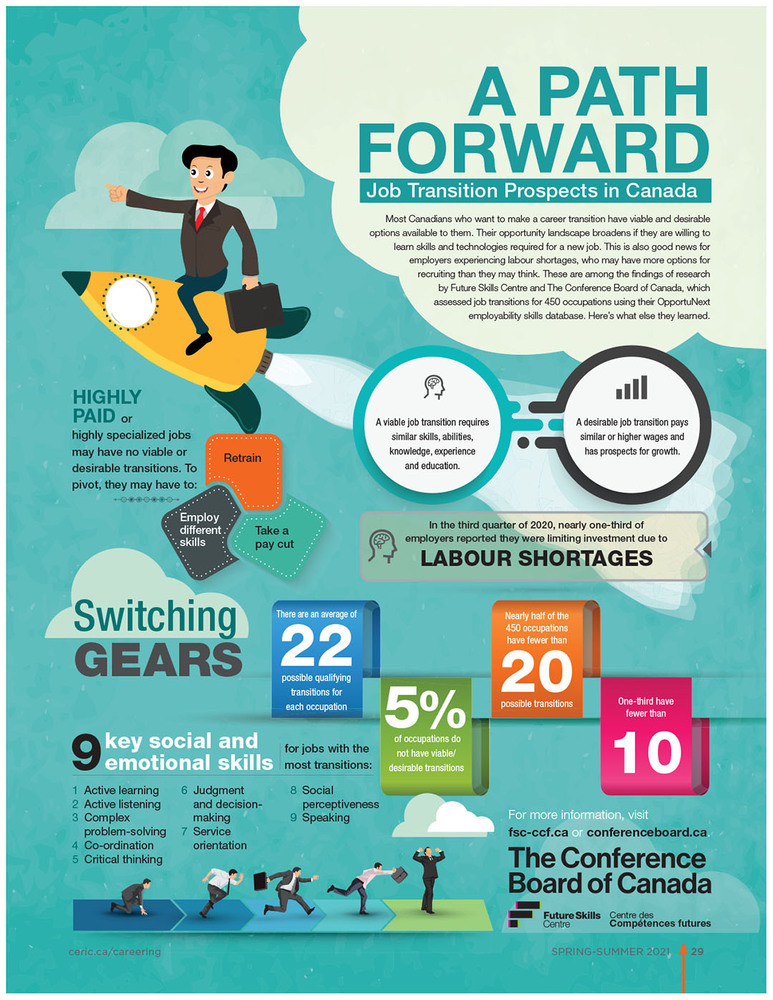
Career competencies and skills translation: Helping students prepare for the future of work
June 22, 2021
10 Questions with the Honourable Ethel Blondin-Andrew
June 22, 2021Most Canadians who want to make a career transition have viable and desirable options available to them. Their opportunity landscape broadens if they are willing to learn skills and technologies required for a new job. This is also good news for employers experiencing labour shortages, who may have more options for recruiting than they may think. These are among the findings of research by Future Skills Centre and The Conference Board of Canada, which assessed job transitions for 450 occupations using their OpportuNext employability skills database. Here’s what else they learned.
Plain text below image.
A viable job transition requires similar skills, abilities, knowledge, experience and education.
A desirable job transition pays similar or higher wages and has prospects for growth.
Switching gears
- 22: The average number of possible qualifying transitions for each occupation
- 5: The percent of occupations without viable/desirable transitions
- Nearly half of the 450 occupations have fewer than 20 possible transitions
- One-third have fewer than 10
Highly paid or highly specialized jobs may have no viable or desirable transitions. To pivot, they may have to:
- Retrain
- Employ different skills
- Take a pay cut
In the third quarter of 2020, nearly one-third of employers reported they were limiting investment due to labour shortages.
9 key social and emotional skills for jobs with the most transitions:
- Active learning
- Active listening
- Complex problem-solving
- Co-ordination
- Critical thinking
- Judgment and decision-making


